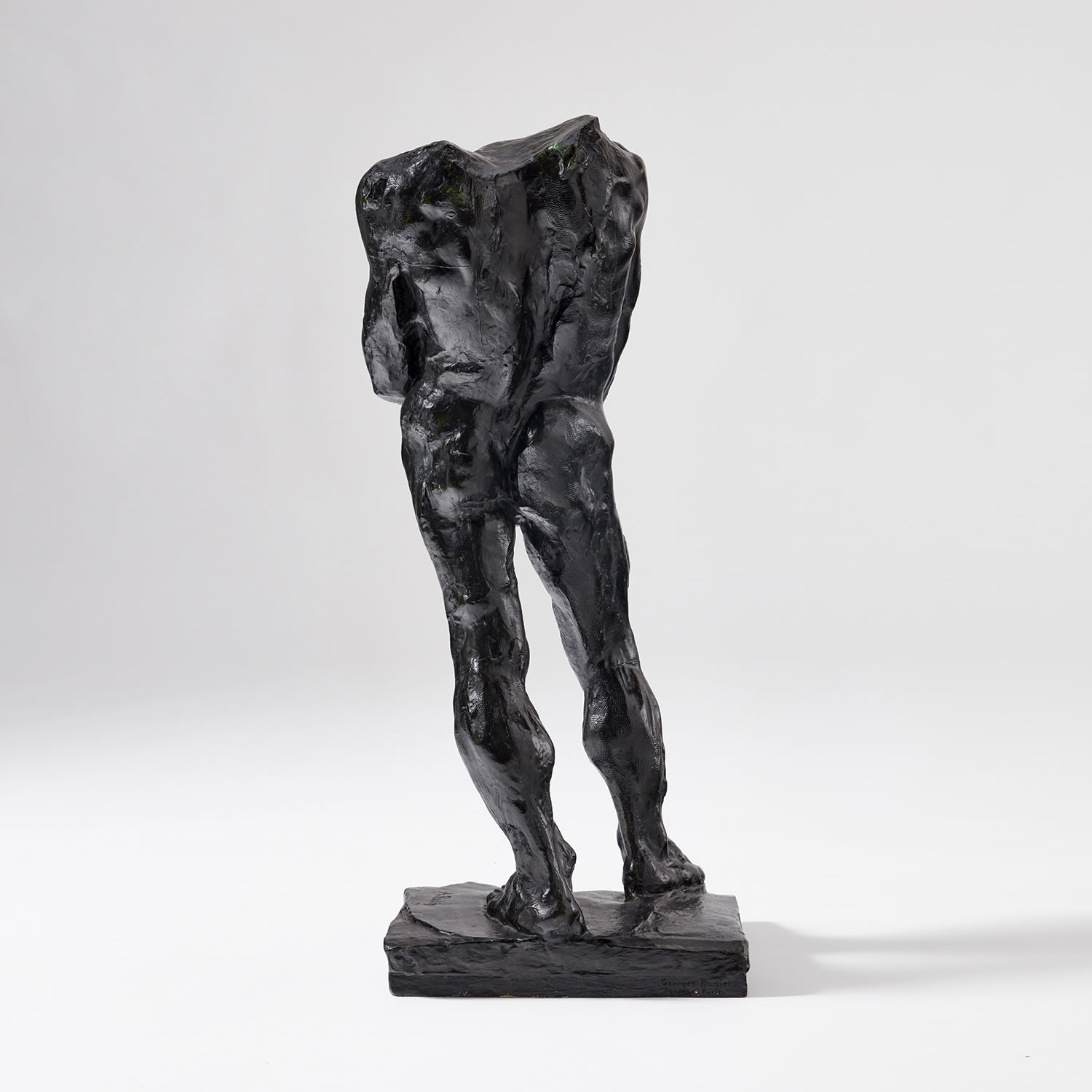





Property from an Important Japanese Private Collection
125Ο
Auguste Rodin
Balzac, étude de nu type F dite aussi 'étude en athlète'
incised with the artist's signature and number "A Rodin N° 4" left of figure's proper left foot; incised with the artist's signature "A. Rodin" on the underside; stamped with the foundry mark ".Georges Rudier. / .Fondeur.Paris." back right of base; incised with the inscription and date "© by.musée Rodin.1971" lower right of right side of base
bronze
36 7/8 x 16 x 14 3/8 in. (93.7 x 40.6 x 36.5 cm)
Conceived in 1896 and cast in bronze in April 1971, this work is number 4 from an edition of approximately 12 made for the Musée Rodin, Paris, between 1967 and 1995, and one of 10 that was cast by Georges Rudier Fondeur, Paris, between 1967 and 1982. This work will be included in the forthcoming Auguste Rodin catalogue critique de l'oeuvre sculpté currently being prepared by the Comité Auguste Rodin at Galerie Brame et Lorenceau under the direction of Jérôme Le Blay under the archive no. 2021-6487B.
Other casts from this edition are held in the permanent collections of the Stanford University, Cantor Arts Center, Palo Alto (1/8); The Museum of Modern Art, New York (2/8); Brooklyn Museum of Art, New York (7/8); Region Art Gallery, Newcastle (8/8); and Musée Rodin, Paris (0/8).
Other casts from this edition are held in the permanent collections of the Stanford University, Cantor Arts Center, Palo Alto (1/8); The Museum of Modern Art, New York (2/8); Brooklyn Museum of Art, New York (7/8); Region Art Gallery, Newcastle (8/8); and Musée Rodin, Paris (0/8).